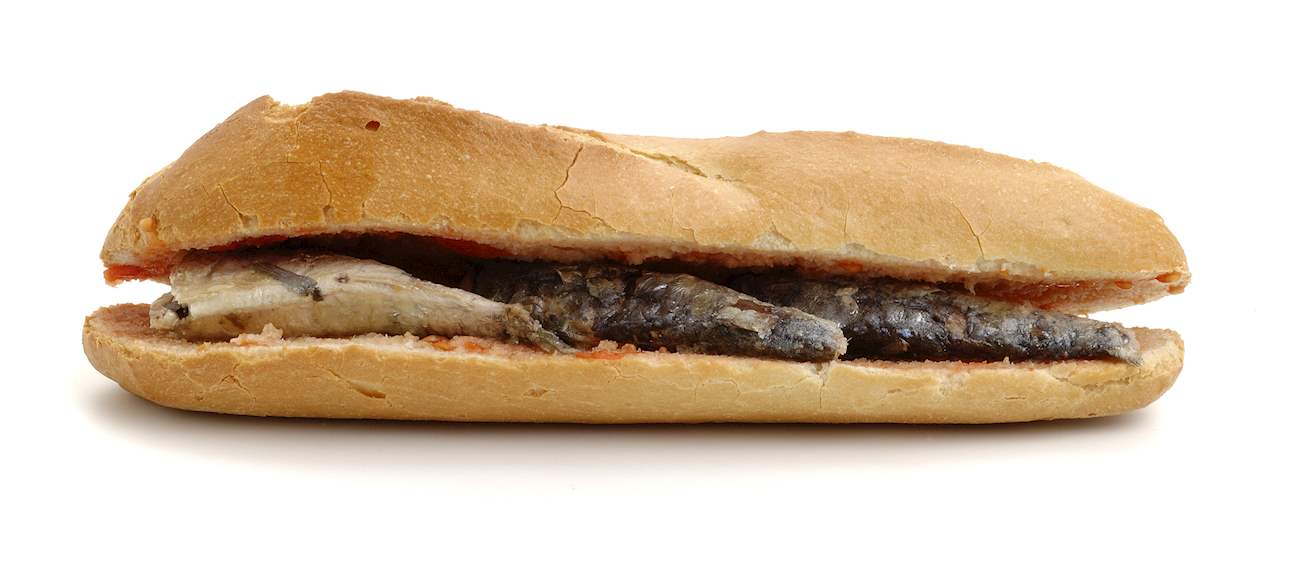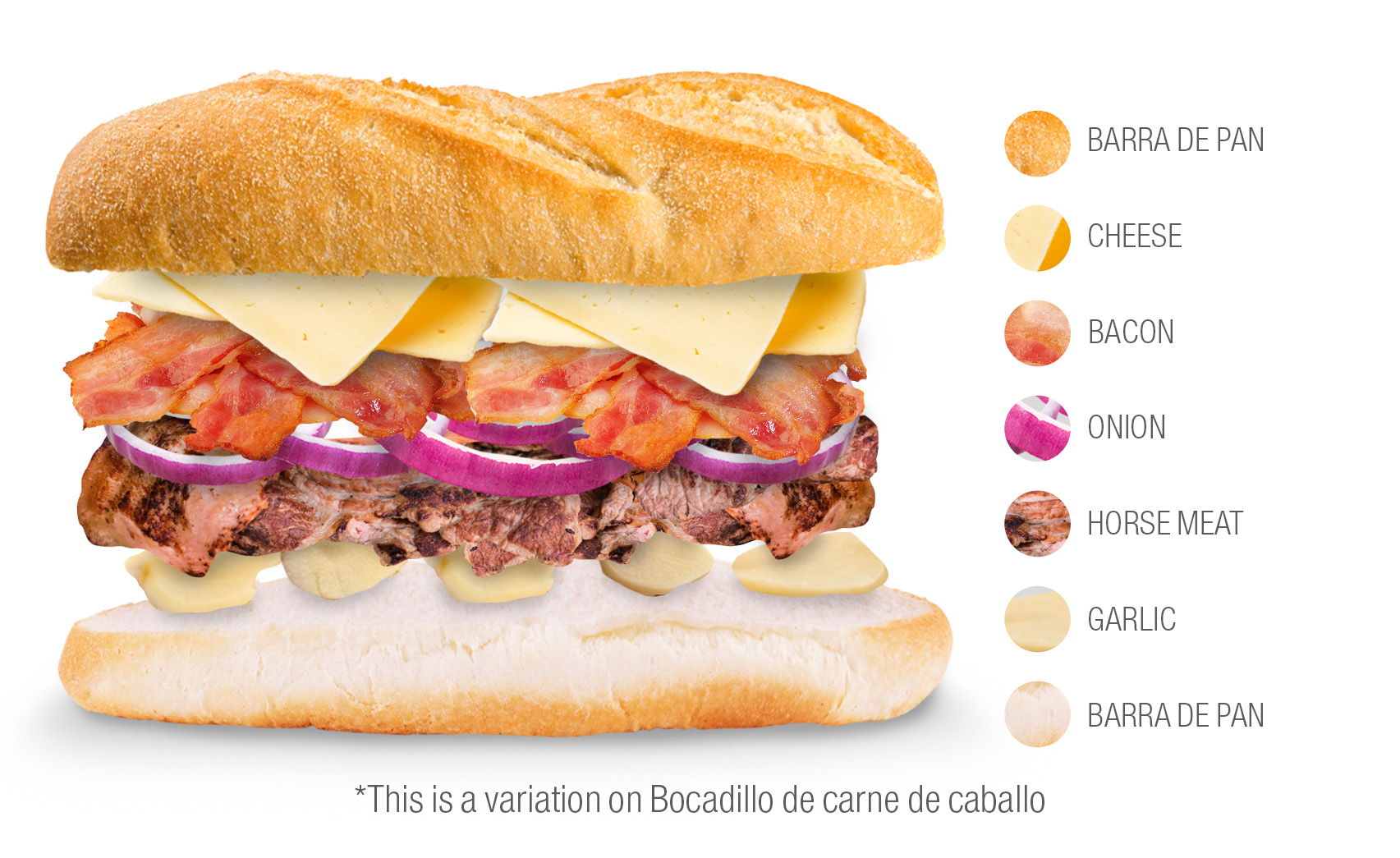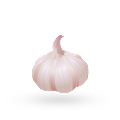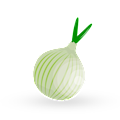MAIN INGREDIENTS
Bocadillo de carne de caballo is a traditional sandwich that’s filled with horse meat. Typically, a Spanish-style baguette called barra de pan is sliced in half lengthwise, and it is then stuffed with pieces of roasted, fried, or grilled horse meat.
Other common ingredients added to the sandwich’s filling include young garlic, slices of cheese, crispy-fried bacon, beans, and onions. This variety of the Spanish bocadillo sandwich is typically served with accompaniments such as a glass of cold beer or red wine, a cup of coffee, olives, and peanuts on the side.
Bocadillo de sardinas is a humble Spanish sandwich with a savory filling of canned sardines. The sandwich is usually made with a Spanish-style baguette (barra de pan), although other types of bread may also be used such as ciabatta bread or wholemeal bread.
After it’s been sliced lengthwise, the bread is topped with sardines which can be preserved in oil, tomato sauce, or vinegar, thus imbuing the sandwich with additional flavor. The filling may be enhanced with various other ingredients such as peppers, tomatoes, cilantro, lettuce, onions, avocados, olives, boiled eggs, mayonnaise, mustard, yogurt sauce, mushrooms, sautéed vegetables, and olive oil.
At its simplest, bocadillo de anchoas typically consists of a Spanish-style baguette (barra de pan) that’s been sliced along the middle and filled with anchovies. The cut side of the bread is often rubbed with ripe tomato halves, olive oil, and garlic to make the sandwich juicier and imbue it with additional flavor.
Apart from the canned anchovies, other typical ingredients used in the filling include slices of goat cheese (queso de cabra) or Manchego cheese, tomatoes, onions, marmelada de pimientos (pepper marmalade), roasted red peppers (piquillo peppers), and olives.
MOST ICONIC Bocadillo de anchoas
View moreMAIN INGREDIENTS
Bocadillo de verduras is a Spanish sandwich made with a hunk of bread that's filled with a variety of vegetables, usually roasted. The sandwich typically consists of a ciabatta bread roll or a Spanish-style baguette (barra de pan) that's been cut in half along the middle and filled with vegetables.
Typical vegetables for the sandwich’s filling include zucchinis, peppers, eggplants, carrots, tomatoes, onions, artichokes, salad greens, broccoli, cauliflowers, and peas. The bread is sometimes broiled for added crispiness, while the sandwich's filling may also be enhanced with other ingredients such as queso de cabra (goat cheese) or queso fresco (fresh cheese), slices of salami, mushrooms, or eggs.
At its simplest, bocadillo de mejillones is a type of seafood bocadillo sandwich consisting of Spanish bread that’s filled with mussels. The mussels used for the filling are usually pickled (mejillones en escabeche), while the traditional choice of bread is a Spanish-style baguette called barra de pan.
Typically, the baguette is cut in half along the middle, topped with a layer of pickled mussels, and (optionally) drizzled with the pickling sauce or olive oil before it’s closed with the other half of the bread. The sandwich may occasionally be enhanced with the addition of other ingredients such as lettuce or arugula, tomato or cucumber slices, potato fries, queso fresco (fresh cheese), mayonnaise, and lemon juice.
Bocadillo de salami is a variety of the Spanish bocadillo sandwich, consisting of a Spanish-style baguette (barra de pan) that's generously layered with thin slices of salami. After it’s been cut lengthwise, the bread can (optionally) be moistened with a drizzle of olive oil or rubbed with tomato halves and garlic for added flavor.
It can also get toasted for added crispiness before the ingredients of the filling are assembled. Apart from the salami, the filling may also contain slices of cheese (such as panela, mozzarella, Manchego, Gouda, or Edam), cherry tomatoes, onions, or arugula leaves.
This Spanish bocadillo sandwich variety uses a type of Spanish blood sausage called morcilla as a filling. The morcilla sausage can come in the form of a thick, paste-like spread (typical of León) or as thick sausage slices (with the most famous being the Burgos version) which have been fried, grilled, or roasted.
Rustic, Spanish-style baguette (barra de pan) is the most common type of bread used for this sandwich, although other types of Spanish bread may also be used. Traditionally, the baguette is cut in half along the middle, and it is then filled with the sausage.
MAIN INGREDIENTS
Bocadillo de mortadela is a sandwich made with Spanish bread and slices of mortadella. To make the sandwich, a type of Spanish-style baguette (barra de pan) is typically cut in half and layered with thin slices of raw or fried mortadella (with peppercorns, olives, or truffles).
The bread is often moistened by rubbing the inside with tomato halves and olive oil. Other types of bread may also be used instead of a baguette such as a llonguet bread roll or a ciabatta, among others. Apart from the mortadella, other typical ingredients featured in the sandwich include slices of cheese, tomatoes, and strips of roasted or pickled peppers.
MAIN INGREDIENTS
This Spanish bocadillo sandwich variety uses thick slices of tortilla francesa or French omelet as a filling. The sandwich can be prepared with a Spanish-style baguette (barra de pan) or a mollete (a soft, round, and flattened Andalusian bread roll), which is usually cut in half along the middle and stuffed with the omelet.
To make the sandwich juicer, the interior of the bread is often rubbed with ripe tomato halves or drizzled with olive oil. Other typical additions include slices of cheese, crispy bacon or chorizo sausage slices, ham, tomatoes, or slices of chicken breasts.
MAIN INGREDIENTS
Bocadillo de ternera is one of the classic meat-based varieties of the Spanish bocadillo sandwich, consisting of a sliced bread loaf and veal steak. The sandwich is typically made with a Spanish-style baguette (barra de pan) or a ciabatta that has been cut in half lengthwise and filled with a slice of grilled or fried veal.
Other common additions to the sandwich’s filling include slices of crispy-fried Serrano ham, fried green peppers, onions, slices of cheese, tomato slices or sauce, and lettuce. The cut sides of the bread are often drizzled with olive oil or slathered with mayonnaise, mustard, or butter, while the bread may also get slightly toasted to make it crispier.
TasteAtlas food rankings are based on the ratings of the TasteAtlas audience, with a series of mechanisms that recognize real users and that ignore bot, nationalist or local patriotic ratings, and give additional value to the ratings of users that the system recognizes as knowledgeable. For the “26 Worst Rated Spanish Sandwiches” list until April 19, 2025, 1,682 ratings were recorded, of which 1,438 were recognized by the system as legitimate. TasteAtlas Rankings should not be seen as the final global conclusion about food. Their purpose is to promote excellent local foods, instill pride in traditional dishes, and arouse curiosity about dishes you haven’t tried.























